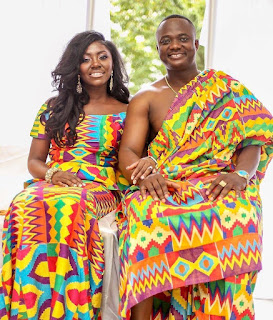The Malagasy traditional wedding
Although the progressive westernization of Madagascar marriage is observed, many areas, especially rural, still attach great importance to traditional customs in Madagascar. Only once completed that traditional marriage can take place civil and religious marriage.
The Malagasy traditional wedding takes place in the country, although since the fifties more and more weddings are held in the city, following the Western model. The traditional Malagasy wedding is very codified and should be respected to the letter to the union to be accepted by the community and be declared legitimate and legal.
The main steps are :
Before marriage, there is all a preparation phase: first, the pretender meeting the family of the woman he loves and asks permission to ask for her hand, it is the "fiantranoana".
Once accepted marriage, both families meet, introduce themselves and get to know at the "fisehoana". Finally, families gather again for the "fanapahan-draharaha", a stage during which they set the wedding date and agree on its organization and distribution expenses.
The engagement, or "fanateram-bodiondry" are conducted as follows:
The pretender goes walking with his family to the home of the bride, where he asks for her hand through a speaker. Indeed, every family is represented by a speaker, professional rhetoric which provide information in the context of a chapel adjacent to the origins of married and the conditions of their union.
Both families seal their agreement with the ceremony of "Vodiondry": it is the symbolic handing over of the dowry by the bride's family to the groom, an envelope containing a copy of each type of coin and note Madagascar.
Furthermore, the suitor offers parents of the bride a sheep to mark his respect, and certain family members of the envelopes containing money: at least three, they are intended to offset the departure of the bride the home, where she can no longer help his relatives in performing daily tasks.
Finally, the groom gives the elected its heart a gift, often an alliance yellow gold to symbolize their union.
Once these formalities have been completed, families gather around an open air feast or "Hanim-pitoloha" under a tent decorated with flowers, standing in the garden, where tables and chairs have been arranged, replacing the mats for a meal on the ground.
The meal will be served at the table or to constitute a buffet as the culinary traditions of the island. The wedding cake is an important symbol that will impress guests with its color and shape, to choose according to its meaning.
Animation for marriage, have recourse to an orchestra that will interpret traditional tunes as well as more current songs during the evening.
The Malagasy traditional wedding takes place in the country, although since the fifties more and more weddings are held in the city, following the Western model. The traditional Malagasy wedding is very codified and should be respected to the letter to the union to be accepted by the community and be declared legitimate and legal.
The main steps are :
Before marriage, there is all a preparation phase: first, the pretender meeting the family of the woman he loves and asks permission to ask for her hand, it is the "fiantranoana".
Once accepted marriage, both families meet, introduce themselves and get to know at the "fisehoana". Finally, families gather again for the "fanapahan-draharaha", a stage during which they set the wedding date and agree on its organization and distribution expenses.
The engagement, or "fanateram-bodiondry" are conducted as follows:
The pretender goes walking with his family to the home of the bride, where he asks for her hand through a speaker. Indeed, every family is represented by a speaker, professional rhetoric which provide information in the context of a chapel adjacent to the origins of married and the conditions of their union.
Both families seal their agreement with the ceremony of "Vodiondry": it is the symbolic handing over of the dowry by the bride's family to the groom, an envelope containing a copy of each type of coin and note Madagascar.
Furthermore, the suitor offers parents of the bride a sheep to mark his respect, and certain family members of the envelopes containing money: at least three, they are intended to offset the departure of the bride the home, where she can no longer help his relatives in performing daily tasks.
Finally, the groom gives the elected its heart a gift, often an alliance yellow gold to symbolize their union.
Once these formalities have been completed, families gather around an open air feast or "Hanim-pitoloha" under a tent decorated with flowers, standing in the garden, where tables and chairs have been arranged, replacing the mats for a meal on the ground.
The meal will be served at the table or to constitute a buffet as the culinary traditions of the island. The wedding cake is an important symbol that will impress guests with its color and shape, to choose according to its meaning.
Animation for marriage, have recourse to an orchestra that will interpret traditional tunes as well as more current songs during the evening.





Commentaires
Enregistrer un commentaire